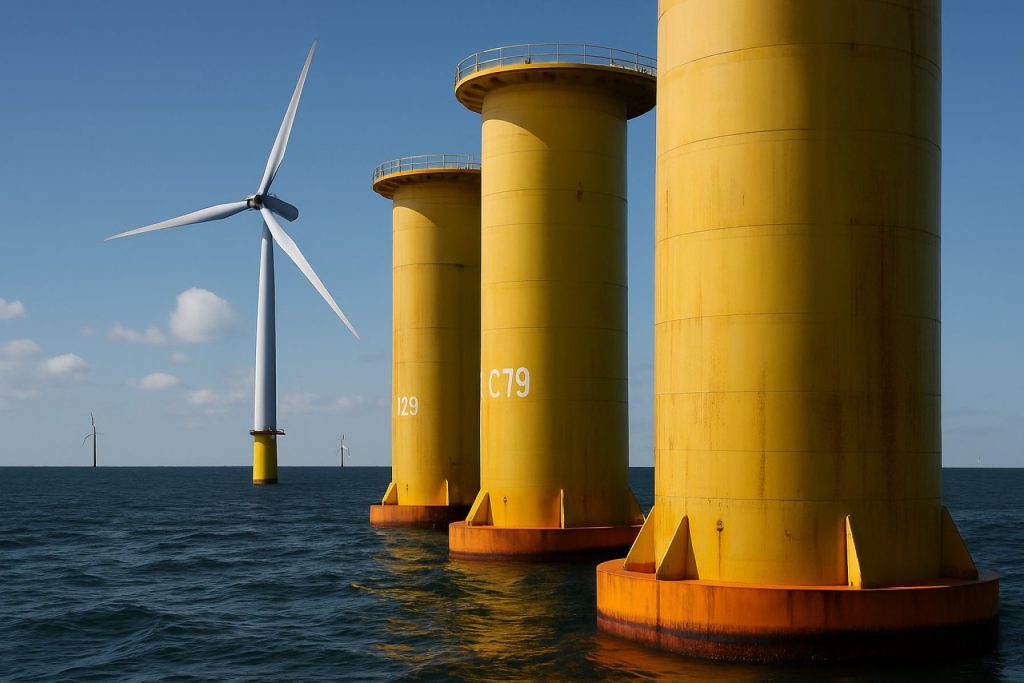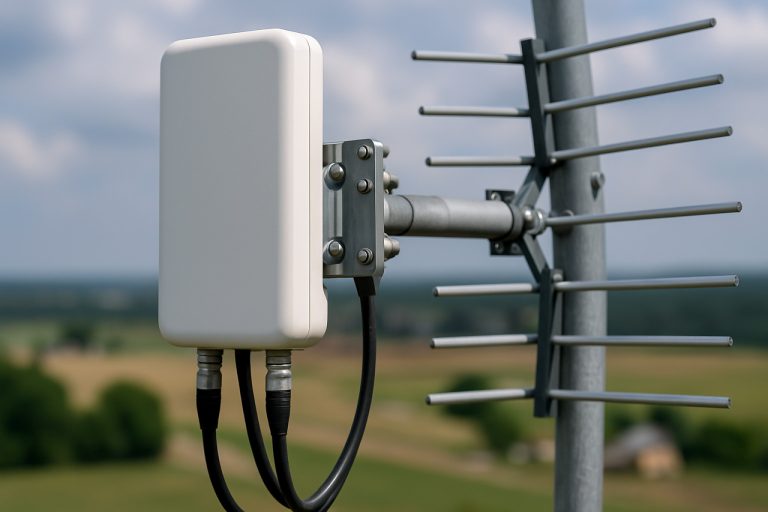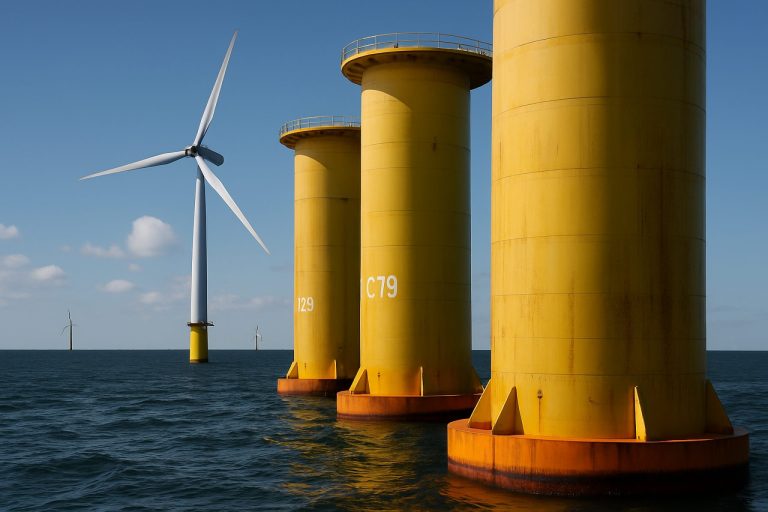
Unveiling the Backbone of Offshore Wind: How Innovative Foundations Are Transforming Renewable Energy at Sea. Discover the Engineering Marvels Supporting Tomorrow’s Clean Power.
- Introduction: The Critical Role of Foundations in Offshore Wind
- Types of Offshore Wind Turbine Foundations Explained
- Engineering Challenges and Solutions in Harsh Marine Environments
- Installation Techniques and Logistics
- Environmental Impact and Sustainability Considerations
- Cost Analysis and Economic Viability
- Recent Innovations and Future Trends in Foundation Design
- Case Studies: Success Stories from Leading Offshore Wind Farms
- Regulatory Standards and Safety Protocols
- Conclusion: The Future of Offshore Wind Turbine Foundations
- Sources & References
Introduction: The Critical Role of Foundations in Offshore Wind
Offshore wind turbine foundations are a cornerstone of the rapidly expanding offshore wind energy sector, providing the essential structural support that enables turbines to operate reliably in challenging marine environments. Unlike their onshore counterparts, offshore wind turbines face unique stresses from waves, currents, and wind, making the design and installation of robust foundations critical for both safety and long-term performance. The choice of foundation type—ranging from monopiles and jackets to gravity-based and floating structures—depends on factors such as water depth, seabed conditions, and turbine size. Each foundation solution must ensure stability, minimize environmental impact, and optimize installation costs, all while supporting the increasing scale of modern wind turbines.
The importance of foundation design extends beyond structural integrity; it directly influences the economic viability and environmental footprint of offshore wind projects. Poorly designed foundations can lead to costly maintenance, reduced energy output, or even catastrophic failure. As the industry moves into deeper waters and more complex seabed conditions, innovation in foundation technology is essential. Recent advancements include the development of floating foundations, which open new areas for wind farm deployment and reduce dependence on specific seabed types. Regulatory frameworks and best practice guidelines, such as those provided by the DNV and International Electrotechnical Commission (IEC), play a pivotal role in standardizing design and ensuring safety across global projects.
In summary, offshore wind turbine foundations are not merely a technical necessity but a strategic element that underpins the success and sustainability of offshore wind energy, shaping the future of renewable power generation worldwide.
Types of Offshore Wind Turbine Foundations Explained
Offshore wind turbine foundations are engineered to support turbines in challenging marine environments, and their selection depends on factors such as water depth, seabed conditions, and turbine size. The most common types include monopile, jacket, gravity-based, suction caisson, and floating foundations.
- Monopile foundations are large steel tubes driven deep into the seabed and are the most widely used for shallow waters (up to 30 meters). Their simplicity and cost-effectiveness make them popular for many European projects (DNV).
- Jacket foundations are lattice structures anchored to the seabed at multiple points, suitable for deeper waters (up to 60 meters). They offer greater stability and are often used in areas with strong currents or larger turbines (4C Offshore).
- Gravity-based foundations rely on their massive weight, typically concrete, to remain stable on the seabed. They are used where pile driving is impractical or environmental restrictions exist (International Energy Agency).
- Suction caisson foundations use large, inverted steel buckets that are embedded into the seabed by creating a pressure differential. They are quick to install and remove, making them attractive for certain soil conditions (Equinor).
- Floating foundations are essential for deep waters (over 60 meters), where fixed structures are not feasible. These include spar-buoy, semi-submersible, and tension-leg platforms, anchored by mooring lines and designed to withstand harsh ocean conditions (National Renewable Energy Laboratory).
The choice of foundation type is a critical design decision, influencing project cost, installation complexity, and long-term performance.
Engineering Challenges and Solutions in Harsh Marine Environments
Offshore wind turbine foundations face significant engineering challenges due to the harsh and dynamic conditions of marine environments. These challenges include high wave and current loads, corrosive saltwater, variable seabed conditions, and extreme weather events such as storms and hurricanes. The structural integrity and long-term durability of foundations are critical, as failures can lead to costly repairs and operational downtime.
One major challenge is the design of foundations that can withstand cyclic loading from waves and wind, which can induce fatigue and lead to material degradation over time. Engineers address this by employing advanced materials, such as high-strength steel and corrosion-resistant coatings, and by conducting detailed site-specific geotechnical surveys to optimize foundation design for local seabed conditions. For example, monopile foundations, commonly used in shallow waters, require precise installation techniques to ensure stability and minimize environmental impact, while jacket and floating foundations are developed for deeper waters and more complex seabed profiles DNV.
Corrosion protection is another critical concern. Solutions include cathodic protection systems and the use of sacrificial anodes, as well as regular inspection and maintenance regimes. Additionally, installation operations must be carefully planned to account for weather windows and logistical constraints, often utilizing specialized vessels and equipment International Energy Agency.
Innovative approaches, such as the development of hybrid and modular foundation systems, are being explored to enhance adaptability and reduce costs. Ongoing research and collaboration between industry and academia continue to drive improvements in foundation technology, ensuring the resilience and sustainability of offshore wind energy projects in challenging marine environments National Renewable Energy Laboratory.
Installation Techniques and Logistics
The installation of offshore wind turbine foundations is a complex process that requires meticulous planning, specialized vessels, and advanced engineering techniques. The choice of installation method depends largely on the foundation type—monopile, jacket, gravity-based, or floating—and the specific site conditions such as water depth, seabed composition, and weather patterns. Monopile foundations, the most common for shallow waters, are typically installed using large jack-up vessels equipped with hydraulic hammers to drive the piles into the seabed. Jacket foundations, suitable for deeper waters, require heavy-lift vessels to position and secure the lattice structures with piles or suction buckets.
Logistics play a critical role in the success of foundation installation. The transportation of massive foundation components from fabrication yards to offshore sites involves coordination of heavy-lift ships, barges, and port facilities. Weather windows are carefully monitored to minimize risks during transit and installation, as adverse conditions can lead to costly delays or safety hazards. Pre-installation surveys using remotely operated vehicles (ROVs) and geotechnical equipment ensure precise placement and stability of the foundations.
Recent advancements include the use of dynamic positioning systems for installation vessels, which enhance accuracy and reduce the need for anchoring, as well as modular construction techniques that allow for faster assembly offshore. The logistics chain is further optimized through digital tracking and real-time communication between onshore and offshore teams. These innovations are crucial for scaling up offshore wind projects and reducing overall costs, as highlighted by DNV and International Energy Agency.
Environmental Impact and Sustainability Considerations
The environmental impact and sustainability of offshore wind turbine foundations are critical considerations in the development and operation of offshore wind farms. The installation of foundations—whether monopile, jacket, gravity-based, or floating—can disturb marine habitats, alter sediment transport, and generate underwater noise that may affect marine mammals and fish. For example, pile driving during installation produces significant noise, which has led to the implementation of mitigation measures such as bubble curtains and seasonal restrictions to protect sensitive species (National Oceanic and Atmospheric Administration).
Beyond installation, the long-term presence of foundations can create artificial reefs, potentially enhancing local biodiversity by providing new habitats for marine organisms. However, these structures may also introduce invasive species or alter local ecological balances. The decommissioning phase presents further challenges, as the removal of foundations can again disturb habitats and release contaminants trapped in sediments (International Energy Agency).
Sustainability considerations extend to the materials and lifecycle of foundations. The use of low-carbon concrete, recycled steel, and innovative design approaches can reduce the carbon footprint of foundation manufacturing and installation. Lifecycle assessments are increasingly used to evaluate and minimize environmental impacts from cradle to grave (United Nations Environment Programme). Regulatory frameworks and best practice guidelines are evolving to ensure that offshore wind development aligns with marine conservation goals and broader sustainability targets.
Cost Analysis and Economic Viability
The cost analysis and economic viability of offshore wind turbine foundations are critical factors influencing project feasibility and investment decisions. Foundation costs typically account for 20–35% of the total capital expenditure (CAPEX) of an offshore wind farm, making them one of the most significant cost drivers after turbines themselves. The choice of foundation type—monopile, jacket, gravity-based, or floating—depends on site-specific conditions such as water depth, seabed geology, and environmental constraints, each with distinct cost implications. For instance, monopile foundations are generally more cost-effective for shallow waters (up to 40 meters), while jacket and floating foundations become economically viable in deeper waters despite higher initial costs due to their adaptability and reduced installation challenges International Energy Agency.
Economic viability is further influenced by installation logistics, supply chain maturity, and technological advancements. Innovations in foundation design and installation methods, such as the use of larger monopiles and automated installation vessels, have contributed to significant cost reductions in recent years. Additionally, economies of scale achieved through larger wind farms and standardized foundation designs help lower unit costs International Renewable Energy Agency. However, uncertainties related to permitting, environmental impact assessments, and long-term maintenance can introduce financial risks.
Ultimately, the economic success of offshore wind projects hinges on optimizing foundation selection and design to balance upfront costs with long-term operational efficiency and reliability. As the industry matures and technology advances, the cost competitiveness of offshore wind—including its foundations—is expected to improve, supporting broader adoption and contributing to global renewable energy targets European Investment Bank.
Recent Innovations and Future Trends in Foundation Design
Recent years have witnessed significant advancements in the design and engineering of offshore wind turbine foundations, driven by the need to support larger turbines, reduce costs, and enable deployment in deeper waters. One notable innovation is the development of floating foundation technologies, such as semi-submersible, spar-buoy, and tension leg platforms, which allow turbines to be installed in water depths exceeding 60 meters—well beyond the reach of traditional fixed-bottom solutions. These floating systems are being piloted in projects like Hywind Scotland and Kincardine, demonstrating their viability and scalability for commercial deployment (Equinor).
Another trend is the optimization of monopile and jacket foundations for larger turbines, with diameters now exceeding 10 meters and weights surpassing 2,000 tons. Advanced materials, such as high-strength steel and corrosion-resistant coatings, are being adopted to enhance durability and reduce maintenance requirements. Digitalization and the use of artificial intelligence in design and monitoring are also gaining traction, enabling predictive maintenance and real-time performance assessment (DNV).
Looking ahead, research is focusing on hybrid foundation concepts that combine the benefits of different designs, as well as modular and standardized components to streamline fabrication and installation. Environmental considerations, such as minimizing seabed disturbance and facilitating marine habitat restoration, are increasingly influencing foundation design. As offshore wind expands into new markets and deeper waters, continued innovation in foundation technology will be critical to ensuring the sector’s long-term sustainability and cost competitiveness (International Energy Agency).
Case Studies: Success Stories from Leading Offshore Wind Farms
Several pioneering offshore wind farms have demonstrated the successful deployment of innovative foundation technologies, setting benchmarks for the industry. The Hornsea One project in the UK, currently the world’s largest offshore wind farm, utilizes monopile foundations for its 174 turbines. These steel tubes, driven deep into the seabed, have proven both cost-effective and robust in the challenging North Sea environment. The project’s success has reinforced monopiles as the preferred solution for large-scale developments in relatively shallow waters (Orkam Group).
In deeper waters, jacket foundations have gained prominence. The Beatrice Offshore Wind Farm in Scotland employs three-legged jacket structures, which provide stability on uneven seabeds and in water depths exceeding 40 meters. This approach has enabled the expansion of wind energy into previously inaccessible areas, demonstrating the adaptability of foundation technology (Beatrice Offshore Windfarm Ltd).
Floating foundations represent the next frontier, as showcased by the Hywind Scotland project. Utilizing spar-buoy floating platforms anchored by mooring lines, Hywind has proven the viability of wind power in waters over 100 meters deep. This innovation opens vast new areas for offshore wind development, particularly in regions with deep coastal shelves (Equinor).
These case studies highlight how tailored foundation solutions—monopile, jacket, and floating—are driving the global expansion of offshore wind, each addressing unique site conditions and enabling greater renewable energy generation.
Regulatory Standards and Safety Protocols
Regulatory standards and safety protocols are critical in the design, installation, and operation of offshore wind turbine foundations. These frameworks ensure structural integrity, environmental protection, and the safety of personnel throughout the lifecycle of offshore wind projects. Internationally, the International Electrotechnical Commission (IEC) provides widely adopted standards, such as IEC 61400-3, which addresses the specific requirements for offshore wind turbines, including foundation design and load considerations. National authorities, such as the Federal Maritime and Hydrographic Agency of Germany (BSH) and the Bureau of Ocean Energy Management (BOEM) in the United States, supplement these with region-specific regulations covering site assessment, permitting, and environmental impact.
Safety protocols are enforced through rigorous risk assessments, regular inspections, and maintenance schedules. The Health and Safety Executive (HSE) in the UK, for example, mandates comprehensive safety management systems for offshore construction and operation, including emergency response plans and worker training. Additionally, classification societies like DNV publish technical standards (e.g., DNV-ST-0126) that detail best practices for foundation design, fabrication, and installation, ensuring resilience against harsh marine conditions.
Compliance with these standards not only mitigates risks of structural failure and environmental harm but also facilitates project financing and insurance. As offshore wind expands into deeper waters and more challenging environments, evolving regulatory frameworks and safety protocols remain essential to support innovation while safeguarding people and ecosystems.
Conclusion: The Future of Offshore Wind Turbine Foundations
The future of offshore wind turbine foundations is poised for significant innovation and expansion, driven by the global push for renewable energy and the increasing deployment of larger, more powerful turbines in deeper waters. As the industry moves further offshore, traditional fixed-bottom foundations such as monopiles and jackets are being complemented—and in some cases, supplanted—by floating foundation technologies. These floating solutions enable wind farms to be sited in previously inaccessible deep-water locations, unlocking vast new areas for development and increasing the potential contribution of offshore wind to energy grids worldwide (International Energy Agency).
Advancements in materials science, digital monitoring, and installation techniques are also expected to enhance the durability, cost-effectiveness, and environmental compatibility of future foundations. For example, the use of high-strength, corrosion-resistant materials and modular construction methods can reduce maintenance needs and extend operational lifespans. Additionally, digital twin technology and real-time structural health monitoring are improving predictive maintenance and optimizing performance (DNV).
Environmental considerations will play an increasingly central role, with new designs aiming to minimize seabed disturbance and support marine biodiversity. Regulatory frameworks and industry standards are evolving to ensure that foundation technologies align with sustainability goals and local ecological requirements (4C Offshore).
In summary, the future of offshore wind turbine foundations will be characterized by technological diversification, greater environmental stewardship, and a focus on enabling the next generation of offshore wind projects in challenging marine environments.
Sources & References
- DNV
- International Energy Agency
- Equinor
- National Renewable Energy Laboratory
- United Nations Environment Programme
- European Investment Bank
- Beatrice Offshore Windfarm Ltd
- Federal Maritime and Hydrographic Agency of Germany (BSH)
- Bureau of Ocean Energy Management (BOEM)
- Health and Safety Executive (HSE)



